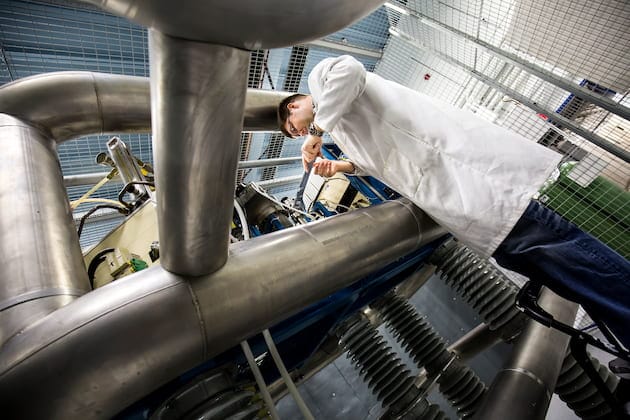
Materials for fusion reactors: U-M launches five new projects
‘Understanding the behavior of materials under extreme conditions is key to developing fusion reactors.’

‘Understanding the behavior of materials under extreme conditions is key to developing fusion reactors.’
In one of the nation’s most advanced university-based ion irradiation facilities, Michigan Engineering researchers launched five new federally-funded projects on materials for fusion energy systems in 2025.
The Michigan Ion Beam Laboratory (MIBL) can simulate the intense radiation conditions found in nuclear energy systems. It’s one of the few facilities in the world that can perform simultaneous triple-beam ion irradiation experiments, closely replicating the complex damage that materials can succumb to inside both fission and fusion reactors.

Advancing nuclear energy
from discovery to deployment
Through partnerships with national labs, universities, and industry, the five teams are working to design tougher tungsten- and vanadium-based alloys, engineer nanostructures for strength and ductility, and optimize manufacturing approaches. Tungsten and vanadium alloys are among the leading contenders for materials that can withstand the heat of plasma in future fusion reactors.
Project collaborators include Commonwealth Fusion Systems, Pacific Northwest and Ames national laboratories, Johns Hopkins University, Iowa State University and the University of Tennessee, Knoxville. Find out more about them.
The projects build momentum in the department’s fusion materials research.
“With some 50 nuclear fusion start-ups pushing the forefront of commercial nuclear fusion, MIBL is providing the capability to address the behavior and selection of materials for fusion-relevant environments,” said Gary Was, emeritus professor of nuclear engineering and radiological sciences and founder of MIBL in 1986.
Added MIBL Director Kevin Field, “The capabilities of the Michigan Ion Beam Laboratory are pivotal in advancing our understanding and development of materials for fusion energy applications. Our work, building upon years of pioneering research at U-M, is crucial in addressing the challenges posed by the harsh conditions in fusion reactors.”
The lab is open to researchers from other institutions as a Nuclear Science User Facility partner.
This summary of the article NERS and MIBL launch new fusion materials programs by Sara Norman was drafted with contributions from AI and edited by a human.